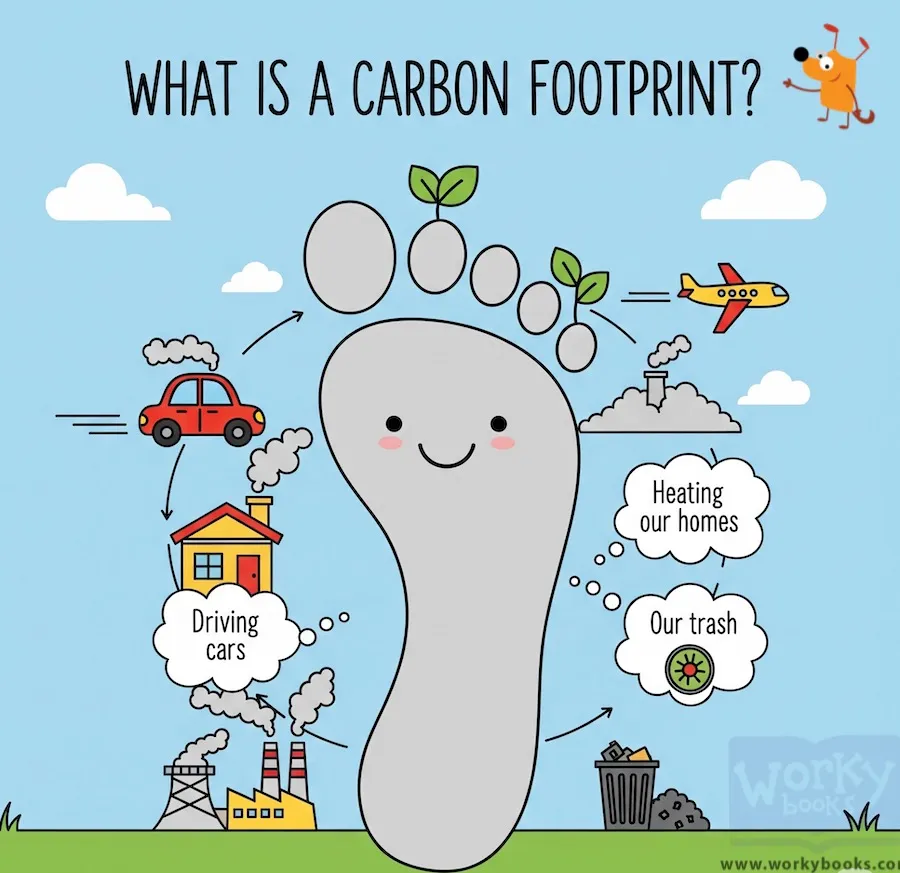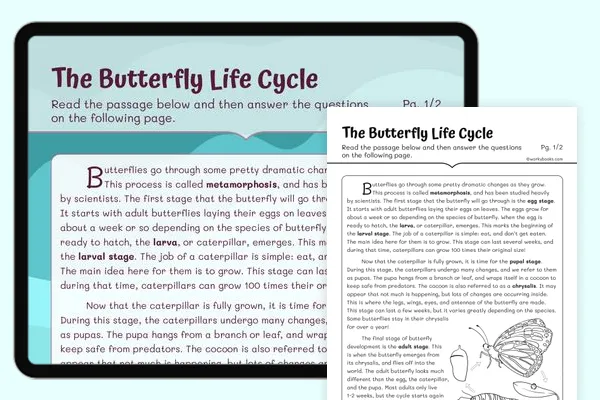What is a carbon footprint? — Reading Comprehension
Grades
- 2
- 3
- 4
Standards
- RI.3.1
- RI.4.1
- 4.ESS2.D
PRINT+DIGITAL RESOURCE
This learning resource is available in interactive and printable formats. The interactive worksheet can be played online and assigned to students. The Printable PDF version can be downloaded and printed for completion by hand.
About This Reader
This passage introduces the concept of a carbon footprint to children. It explains that a carbon footprint is the amount of carbon dioxide released due to an individual's energy needs. The text provides relatable examples, such as car rides and electricity use, to illustrate how everyday activities contribute to one's carbon footprint. It also mentions less obvious sources, like the production and transportation of food and clothes. By explaining how understanding one's carbon footprint can lead to making choices to reduce it, the passage encourages children to think about their own impact on the environment.
Perfect For:
👩🏫 Teachers
- • Reading comprehension practice
- • Auto-graded assessments
- • Literacy skill development
👨👩👧👦 Parents
- • Reading practice at home
- • Comprehension improvement
- • Educational reading time
🏠 Homeschoolers
- • Reading curriculum support
- • Independent reading practice
- • Progress monitoring
Reading Features:
📖
Reading Passage
Engaging fiction or nonfiction text
❓
Comprehension Quiz
Auto-graded questions
📊
Instant Feedback
Immediate results and scoring
📄
Printable Version
Download for offline reading
🔊
Read Aloud
Voice-over with word highlighting























